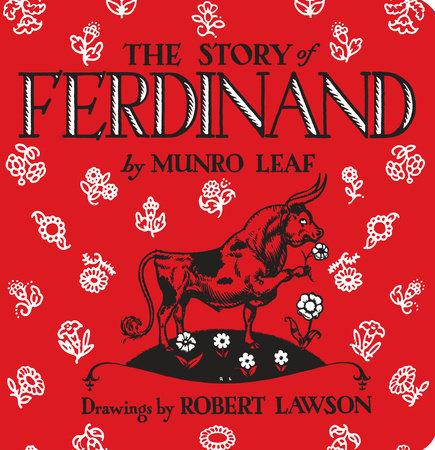A true classic with a timeless message! All the other bulls run, jump, and butt their heads together in fights. Ferdinand, on the other hand, would rather sit and smell the flowers. So what will happen when Ferdinand is picked for the bullfights in Madrid?
The Story of Ferdinand has inspired, enchanted, and provoked readers ever since it was first published in 1936 for its message of nonviolence and pacifism. In WWII times, Adolf Hitler ordered the book burned in Nazi Germany, while Joseph Stalin, the leader of the Soviet Union, granted it privileged status as the only non-communist children's book allowed in Poland.
The preeminent leader of Indian nationalism and civil rights, Mahatma Gandhi—whose nonviolent and pacifistic practices went on to inspire Civil Rights leader Martin Luther King, Jr.—even called it his favorite book.
The story was adapted by Walt Disney into a short animated film entitled
Ferdinand the Bull in 1938.
Ferdinand the Bull won the 1938 Academy Award for Best Short Subject (Cartoons).
Wilbur Monroe Leaf (aka Munro Leaf) (1905–1976) was an American author of children's literature who wrote and illustrated many books during his long career. His books were illustrated by a number of famous artists, including Ludwig Bemelmans, Robert Lawson, and Theodor Seuss Geisel (Dr. Seuss). He is best known for
The Story of Ferdinand (1936).
Robert Lawson (1892–1957) received his art training at the New York School of Fine and Applied Arts. His favorite medium, pen and ink, is used expressively and with detail in his black and white illustrations in
The Story of Ferdinand (by Munro Leaf). In addition to illustrating many children's books, including
Mr. Popper's Penguins, Robert Lawson also wrote and illustrated a number of his own books for children. In 1940, he was awarded the Caldecott Medal for his picture book illustrations in
They Were Strong and Good and in 1944, he was awarded the Newbery Medal for his middle grade novel
Rabbit Hill.















